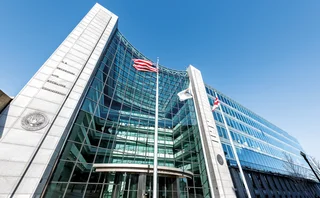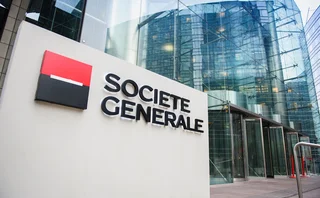
Prop desks set to reap rewards of forex volatility
Banks could be reaping rewards from their proprietary foreign exchange trading desks, as swift intra-day market moves continue, dealers told RiskNews ’ sister publication FX Week .
"These are very healthy markets for proprietary trading," said Tim Yetman of Olea Capital and former head of prop FX at Tokai Bank in London. "Most currency trading prop desks would benefit from these kinds of moves. They've been fairly constant and directional,” said Yetman.
"We've seen pullbacks, but they've been very much of the trend-type market-places that are beneficial in that business," he added.
The continued downtrend of the US dollar, which began in earnest last year, has been the main driver for the increase in proprietary trading opportunities. While the most well-publicised element of this trend has been the euro's stellar rise – it set a new lifetime high against the greenback last week at $1.1935 – other major and emerging-market currencies have also provided healthy trading conditions, dealers said.
"A lot of people have been given a lot of opportunities to make money. The moves have been pretty clear-cut, and banks should have done well," said one head of proprietary foreign exchange at a US bank in London.
Olea's Yetman said trending currencies have also taken away a degree of reliance on economic drivers of currencies. "Having had years of a strongly valued dollar, it's been a very good environment to have currencies moving without interest rates overwhelming the market," he added.
Proprietary forex trading saw something of a decline during the late 1990s. The Asian and Russian financial crises of 1997 and 1998 respectively saw some banks' prop desks suffer heavy losses and kicked off a series of moves that saw prop traders' roles scaled back.
The London prop trader said: "It was definitely an overreaction going back to 1998, when a lot of money was lost in Russia, and the risk managers changed the business plan of a lot of banks."
One of the biggest changes was the centralisation of risk in one centre and a greatly increased focus on the FX sales side of the business. Many banks centralised trading operations, with one centre for each time zone, and cut dealing positions.
The loss of the 12 legacy currencies at the time of the euro's introduction also hit prop foreign exchange, as 12 sources of directional trading were eradicated. A New York-based prop trader said: "Banks went from a trading business to a sales-driven business. Because of that, a lot of desks were cut back and prop teams disbanded."
Although the cutting of risk appetite and prop trading resulted in some positions being cut, some former sell-side dealers – such as David Greenwald, Ken Kristensen and Todd Andrews, who left Bank of America to set up Scalene Partners last year – opted for new careers on the buy-side, setting up FX funds.
At the time, Greenwald said top prop traders should consider a move to the buy-side. "There are some very successful proprietary traders out there," he said. "In my mind, if they are successful, they should be leaving".
But the return of trending markets and intra-day volatility may lead some banks that exited prop trading to re-instate the model. The London prop trader said: "Over the past couple of years, the value of that business in trending markets has helped a lot of banks. Some are looking at the profit and loss generated by prop desks and are looking to set up anew."
Only users who have a paid subscription or are part of a corporate subscription are able to print or copy content.
To access these options, along with all other subscription benefits, please contact info@risk.net or view our subscription options here: http://subscriptions.risk.net/subscribe
You are currently unable to print this content. Please contact info@risk.net to find out more.
You are currently unable to copy this content. Please contact info@risk.net to find out more.
Copyright Infopro Digital Limited. All rights reserved.
As outlined in our terms and conditions, https://www.infopro-digital.com/terms-and-conditions/subscriptions/ (point 2.4), printing is limited to a single copy.
If you would like to purchase additional rights please email info@risk.net
Copyright Infopro Digital Limited. All rights reserved.
You may share this content using our article tools. As outlined in our terms and conditions, https://www.infopro-digital.com/terms-and-conditions/subscriptions/ (clause 2.4), an Authorised User may only make one copy of the materials for their own personal use. You must also comply with the restrictions in clause 2.5.
If you would like to purchase additional rights please email info@risk.net
More on People
People: new leader for LCH, Pham lands CFTC top job, and more
Latest job changes across the industry
Calpers adds machine learning specialist Simonian
Champion of using AI and game theory in investing risk management joins US public fund
People: All shook up at the SEC, Krens succeeds Litvack at Isda, and more
Latest job changes across the industry
Girolami to leave LCH for NatWest
Clearing house CEO named CIB head for UK lender
People: SocGen and Nomura spot slew of FX hires, RepoClear gets new head, and more
Latest job changes across the industry
People: All fall in at Citi, TD turbulence, and more
Latest job changes across the industry
Asia moves: senior hires at Citi, BNP Paribas, and more
Latest job news from across the industry
People: Masters moves into FNZ, Two Sigma founders step back, and more
Latest job changes across the industry







